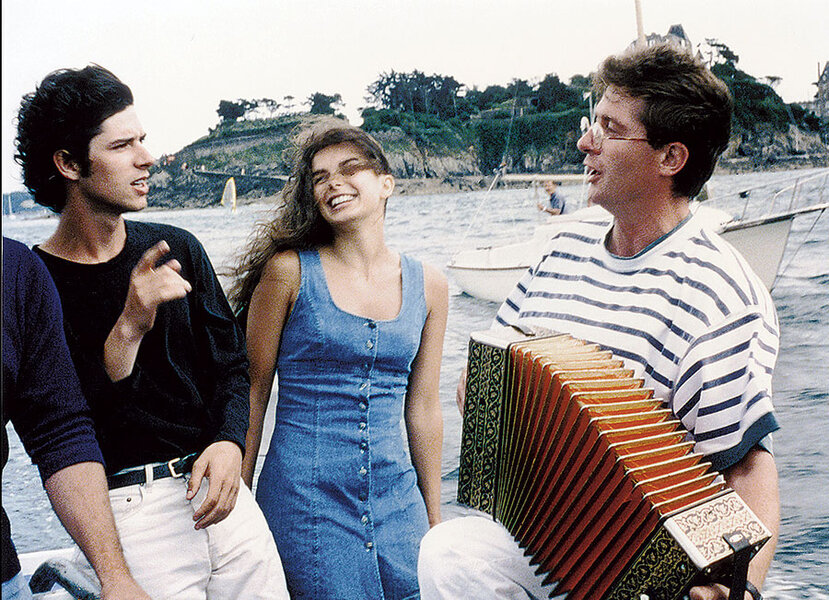'A Summer's Tale' is a story of the vagaries of young love
Loading...
Inexplicably, Eric Rohmer’s “A Summer’s Tale,” made in 1996, is just now being released in America. The insufferable wait was well worth it. The third installment in his “Tales of the Four Seasons” cycle, it’s a movie about the vagaries of young love made by a man in his mid-70s. (Rohmer died at age 89 in 2010.) This young-old duality gives the film an added dimension: We seem to be living right alongside the film’s bright, burnished people as they vacation in seaside Brittany, and yet Rohmer observes them with a calm, almost paternal bemusement.
Rohmer is valued as a filmmaker who could make long, static dialogue sequences dynamic. So it’s something of a surprise that “A Summer’s Tale” opens with perhaps 10 minutes of near-wordlessness. Gaspard (Melvil Poupaud, who has since starred in many French films), a recent college graduate in mathematics, arrives in the Breton resort town of Dinard for a three-week vacation before beginning a new job. He checks into a room and strums his guitar and people-watches at the local cafes. The sensual ease of these scenes, swathed in sunshine and blue sky, is a tease: Rohmer soon brings us into his familiar world of crisscrossing romantic entanglements.
Gaspard is befriended by a local waitress, Margot (Amanda Langlet, who played the title character in Rohmer’s 1983 “Pauline at the Beach”), who seems enchanted by his coy diffidence. Gaspard claims he is waiting for a call from his “sort of” girlfriend Léna (Aurélia Nolin). Margot, who is an ethnologist in the off-season, says she has a boyfriend who is working overseas. It’s clear to us, if not to these two, that they are made for each other. But, mating games being what they are in a Rohmer movie, things are never quite as simple as they appear.
Margot encourages Gaspard to hook up with her girlfriend Solène (Gwenaëlle Simon), a bank teller whose impulsiveness overwhelms him. Not long after, the much heralded Léna actually arrives, and what began as a womanless vacation for Gaspard turns into a multiple-choice test.
Lean and bushy-haired, Gaspard may at first seem withdrawn, but his low-key moodiness functions as a come-on to these women. He says, “I have to be loved to be in love, and since no one loves me, I don’t love anyone.” It’s one of his many seductions. The fact that he may not be altogether aware of how he comes across is part of his charm – and his untrustworthiness. Most directors would have played Gaspard’s complications as farce but Rohmer is too much the amused philosopher for that. He is tickled by Gaspard’s seductive seriousness; he also enjoys giving him his comeuppance. It’s clear when Léna arrives on the scene that she is too much for Gaspard. Suddenly his shiftiness seems a bit silly.
One of the drawbacks to Rohmer’s style is that he has a diagrammatic approach to relationships. He sees human interactions as a series of parables. His movies are demonstrations as much as they are dramatizations. But at his best, in films such as “My Night at Maud’s,” “Claire’s Knee,” and “Le Rayon Vert,” he breaks through to the emotional core of these parables. “A Summer’s Tale” is relatively minor Rohmer, but, within its own circumscribed terms, it’s just about faultless. He makes you smile at the machinations of these young people, who are toying with – and grappling with – their attraction for each other. This is a movie of high innocence, set at a time in life when romantic love is still a frolic and the seaside is a balm that quells all ills. Grade: B+ (This film is rated G.)







